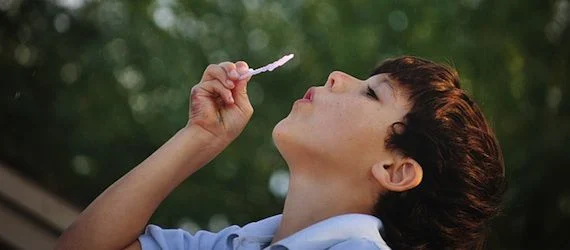It has been proven that there is no need to expose children to radiation in order to efficiently rule out the possibility of liver cancer.
Clinicians at King’s College Hospital, which is part of King’s Health Partners AHSC, have conducted research and proven that children do not need to be exposed to radiation in order to successfully rule out the possibility of liver cancer. Full findings will be published in the European Journal of Ultrasound in December.
This discovery is of major significance as it could mean children are no longer exposed to unnecessary radiation when trying to diagnose their condition, which is in contrast to current proceedings. Children are three times more likely to develop cancer if they are exposed to radiation over a long period of time.
The clinicians have identified an ultrasound contrast agent that can accurately exclude the diagnosis of cancer in the liver, eliminating the need for children to be exposed to radiation.
The King’s research team evaluated results in 44 children with chronic liver problems over five years, and discovered the contrast agent accurately diagnosed non-cancer in liver lesions. Detailed studies regarding the diagnosis of other conditions will be published in due course and have huge potential to be used across all areas of paediatric medicine.
At present, diagnosing the possibility of cancer in children is conducted with CT and MRI scanners. CT exposes children to radiation that could prove to be ‘unnecessary’ if the lesions are benign. The younger children are, the greater the chance they will develop cancer.
In the clinicians’ innovative technique, which discomforts the child very little, the contrast agent SonoVue (made by Italian pharmaceutical company, Bracco SpA in Milan) is injected in a small dose of 1.2-2.4ml into an arm vein. It then travels in the blood to the liver and shows the liver lesion clearly. The agent consists of fatty shelled microbubbles that contain a harmless gas called sulphur hexafluoride. As the body breaks down the shell naturally after around three minutes, ultrasound can visualise these microbubbles of gas circulating in the blood vessels for that amount of time. By analysing these bubbles’ behaviour, clinicians are in a position to diagnose whether the liver lesion is malignant or not. The patient then exhales the gas with no ill effects after five minutes.
Consultant Radiologist at King’s College Hospital and Professor of Imaging Sciences at King's College London Professor Paul Sidhu described it as an exciting breakthrough and went on to express the team’s hope that this new technique would adopted by all disciplines and come into standard practice soon. Providing clinicians with a variety of cancer diagnosis methods and options was very important in their aim to provide the best possible treatment for patients, Professor Sidhu concluded.
A further significant advantage of this new practice is that it decreases the need to sedate children undergoing diagnosis. At present, sedation during MRI is required in a number of children due to the need to stay very still, something challenging for very young patients in particular. Since movement is not a problem with ultrasound, the new method does not require any sedation.
Dr Maria Sellars, Consultant Paediatric Hepatobiliary Radiologist, is charged with identifying the patients who could potentially benefit, a task of great importance to the procedure.
This technique was previously developed with the leadership of King’s in the 1990s and used around the world in adults for the last 20 years, however the effectiveness in children had not been comprehensively investigated to date.
25 November 2013
Latest Articles
Research, Ultrasound, Radiation, Children, liver cancer
It has been proven that there is no need to expose children to radiation in order to efficiently rule out the possibility of liver cancer. Clinicians at...


![Tuberculosis Diagnostics: The Promise of [18F]FDT PET Imaging Tuberculosis Diagnostics: The Promise of [18F]FDT PET Imaging](https://res.cloudinary.com/healthmanagement-org/image/upload/c_thumb,f_auto,fl_lossy,h_184,q_90,w_500/v1721132076/cw/00127782_cw_image_wi_88cc5f34b1423cec414436d2748b40ce.webp)







